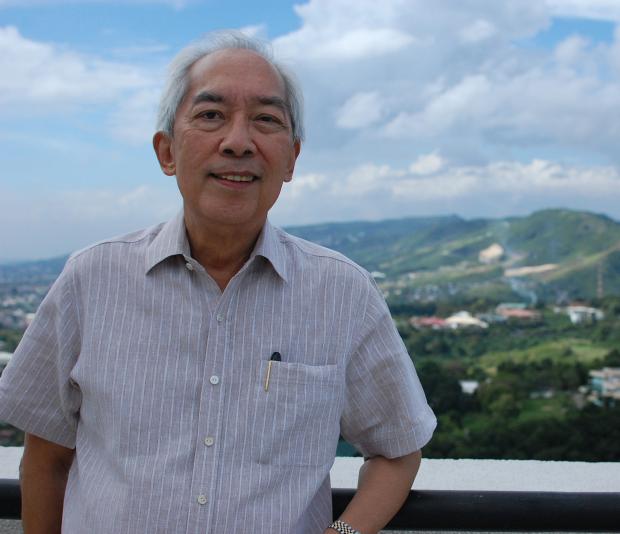Cebuano architect is named to int’l heritage council
A Cebuano architect known for his work here and abroad as a heritage conservation expert was made an honorary member of the International Council for Monuments and Sites (ICOMOS) during its general assembly in Florence, Italy last Saturday.
Augusto Villalon was the first Filipino to become a member of the 7,500-member Paris-based council which advises the United Nations Educational, Scientific and Cultural Organization (Unesco).
ICOMOS, established in 1965, is the international body that reviews nominations of UNESCO cultural world heritage sites. Some examples are the Acropolis in Athens, St. Peter’s Basilica in Rome and the ancient city of Maya in Mexico.
As the only Filipino in the council, Villalon told Cebu Daily News he hopes to reach out to communities in the Philippines and make people, especially decision makers, more informed and sensitive to the value of preserving heritage as part of one’s identity.
Honorary membership in ICOMOS is given to professionals recognized as global leaders in heritage conservation. Only 84 members have been given this distinction.
Structures
Villalon, who completed projects in Australia, China, the United States, Asia, Latin America, and the Philippines, is considered one of the earliest advocates of conservation in the country.
He prepared and wrote the Nomination Dossier for the Rice Terraces of the Cordilleras as a World Heritage Site, including the Tubbataha Reef and Puerto Princesa’s Subterranean River National Park.
He also coordinated the ICOMOs evaluation mission to four baroque churches of the Philippines in 1993, structures which are now official World Heritage Sites.
These are Miagao church in Iloilo, Paoy church in Ilocos Norte, San Agustin Church in Manila and Santa Maria church in Ilocos Sur.
Boljoon
In a talk with Cebu Daily News, Villalon expressed concern about the recent developments in Boljoon town, southern Cebu, where its landmark mountain Ili Rock by the sea has been excavated as an anti-landslide measure by the Dept. of Public Works and Highways.
He said he followed online reports of how Boljoon residents fought to protect heritage sites and how government engineers were “talking in another language”.
“There is a concept of tourism and development but their concept is destruction. We have to find the right venue to educate these people and hopefully it will be done in a good way instead of confronting them. We have learned a lot in preserving the trees in Carcar. After what happened in Boljoon, there are more lessons to be learned,” Villalon said.
Last June, Boljoon town, which hosts the 18th century seaside Patrocinio de Maria Church, was recommended by Philippine heritage experts and advocates to the “Tentative List” of sites in the Philippines that could be nominated as a Unesco World Heritage Site due to its well preserved church, landscape, seascape and culture.
But after DPWH’s excavation of Ili Rock and reclamation work that dumped boulders and debris on the coastline, this prospect no longer looks bright.
When asked if Boljoon would will still be a part of the Tentative List, Villalon said “I don’t think so”.
Misinformed
“Because the landscape has been destroyed. I say it is a result of ignorance. One is talking one language and the other one in another language and they haven’t come together. They are misinformed. If you cut the mountain and put a reclamation, goodbye Boljoon,” Villalon said.
Villalon said preserving heritage is not limited to beautiful infrastructure, such as the town’s Agustinian stone church and watchtowers.
It includes the culture of the community – their way of life, the food, fiesta tradition, the landscape and the seascape.
“For us, these are just ordinary and may look insignificant but these are what make the Boljoanons, the Filipinos, unique. Tourists stay long because they want to experience our culture, exotic things. They don’t want to see choreographed dancing or malls; these are very common. Vigan City (in Ilocos Sur) is very successful with this,” Villalon said.
National identity
“We can generate as much money as people put effort into it. Preserving our heritage costs an equal amount of money to building new malls and reclamation projects. It’s just a question of priorities,” Villalon said.
Villalon has received recognition for his works including the Chevalier de l’Ordre des Arts et des Lettres (Knight of the Order of Arts and Letters) from the Ministry of Culture of France, Diwa ng Lahi from the City of Manila, and Alab ng Haraya from the National Commission for Culture and the Arts.
“People already know what heritage is,” said Villalon, “but they don’t know what it can do for you. They don’t know that we should protect it and that heritage defines who we are, our national identity. Not malls.”
Villalon’s family is from Cebu, which he visits frequently as president and chief operating officer of Genvi Development Corp. which is developing the 25-hectare Monterrazas subdivison of mountain resort homes on family-owned land in Cebu City.
He writes the column “Pride of Place” in the Philippine Daily Inquirer and holds office in Bonifacio Global City in Taguig, Metro Manila.
Villalon finished a degree in sociology/ history of art in the University of Notre Dame in the United States and a masters de gree in architecture in Yale University. He received a doctorate degree in humanities (honoris causa) from Far Eastern University in Manila.
Related Stories:
Long-term damage seen on Boljoon coastline
Disclaimer: The comments uploaded on this site do not necessarily represent or reflect the views of management and owner of Cebudailynews. We reserve the right to exclude comments that we deem to be inconsistent with our editorial standards.

